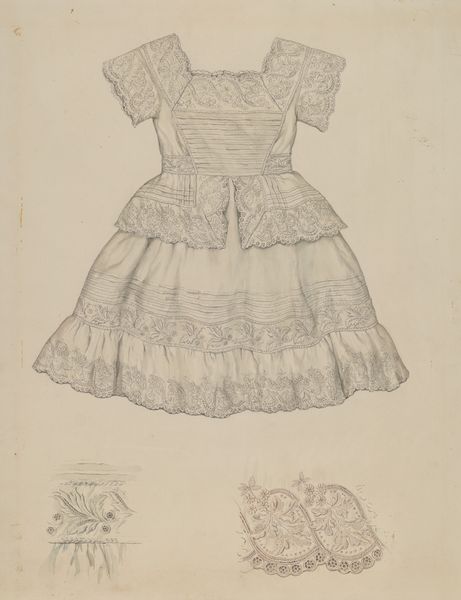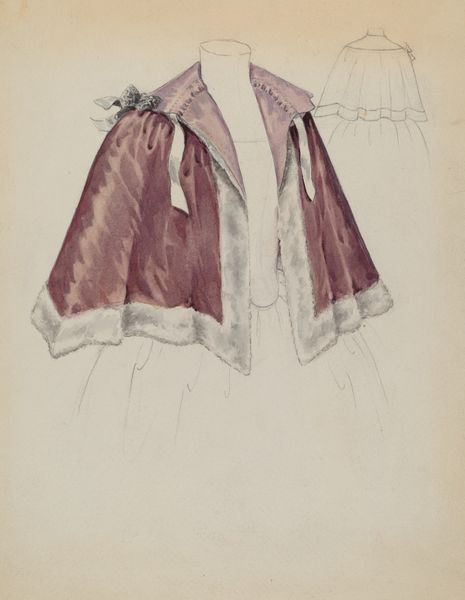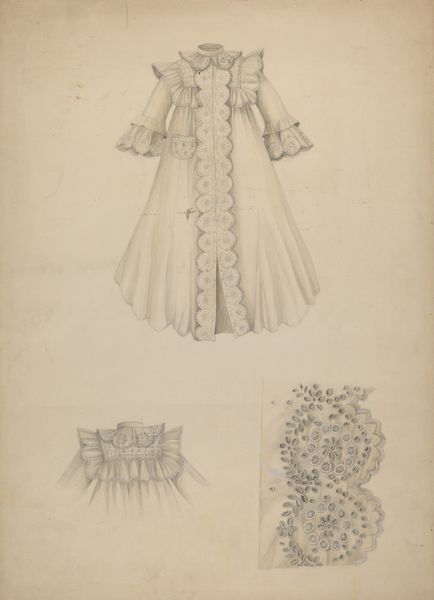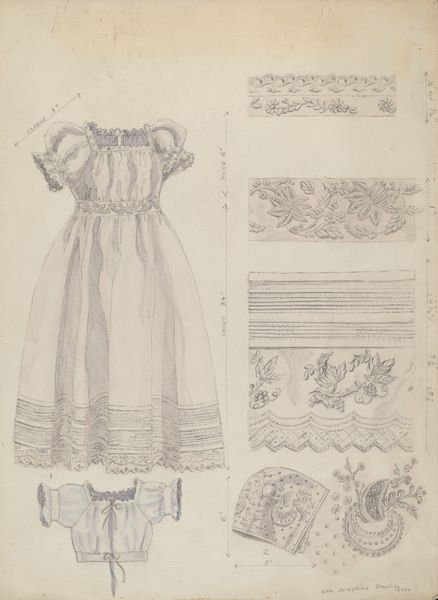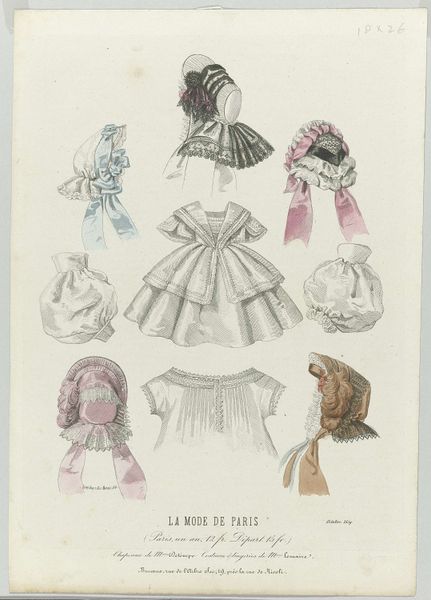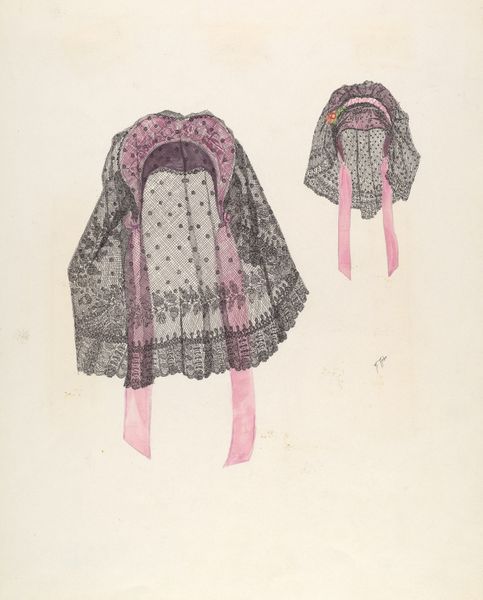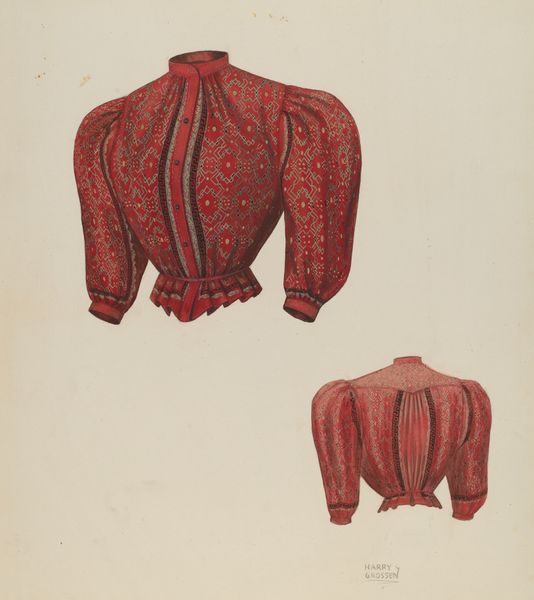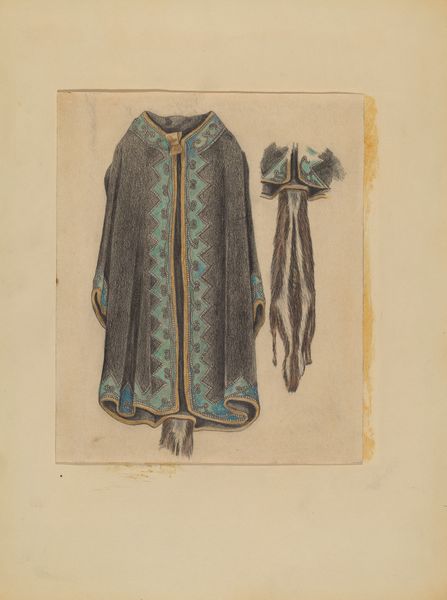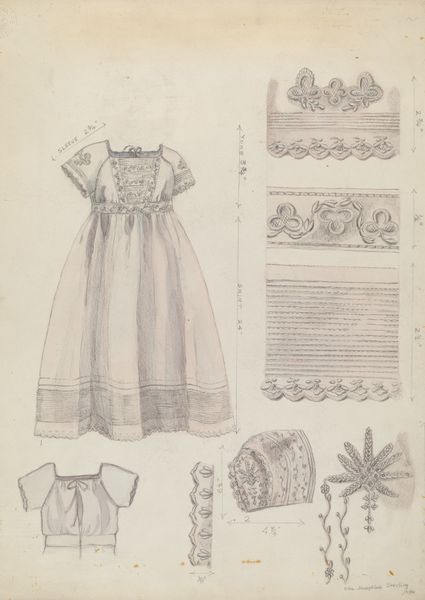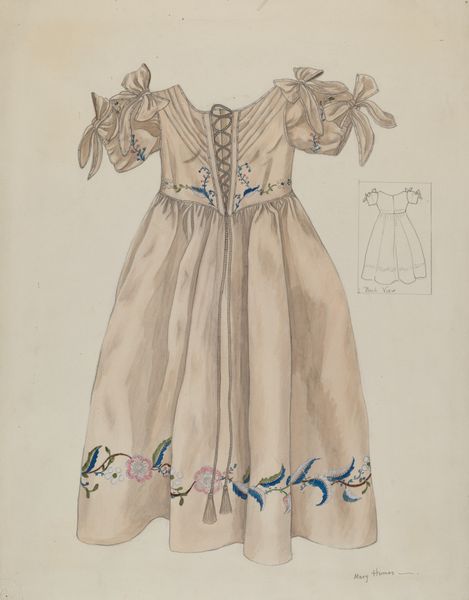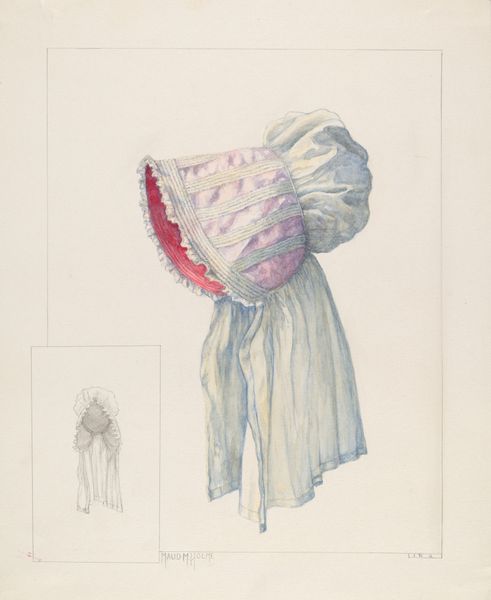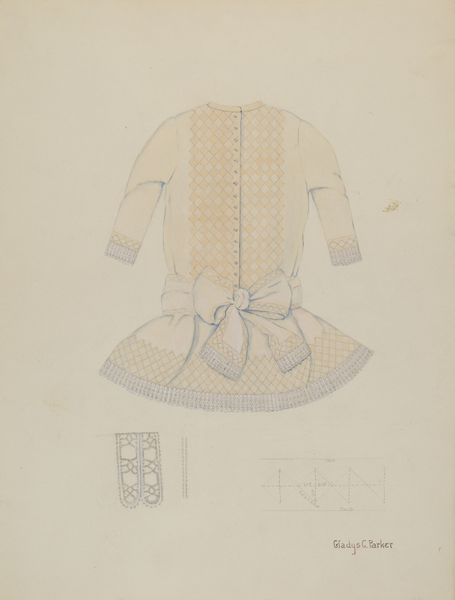
graphic-art, lithograph, print
#
graphic-art
#
lithograph
# print
#
romanticism
#
genre-painting
#
decorative-art
Dimensions: height 267 mm, width 184 mm
Copyright: Rijks Museum: Open Domain
Curator: Here we have a lithograph print titled "Musée des Familles, Août 1845, No. 11, 5ème Année," created around 1845 by an anonymous artist. Editor: It’s so delicate. Almost ghostly with its pale hues, showcasing these meticulously detailed garments and headwear. I imagine each of these garments was created using specific, often painstakingly slow techniques. Curator: Absolutely. "Musée des Familles" translates to "Family Museum", which highlights its target demographic and reflects broader trends within Parisian society at that time. Journals like these played a critical role in shaping gendered expectations and prescribing appropriate domestic roles within burgeoning middle and upper classes. Editor: You can see how that decorative aspect plays out, emphasizing "family work" with “modes vraies.” What materials would they have been working with primarily, and how widely accessible were they? These designs promote not just a certain aesthetic but likely specific levels of labor investment, class aspirations... Curator: Precisely. Availability would differ based on socio-economic status. Lower tiers would adapt the designs to simpler cloths. Remember too how the distribution of such images—mass-produced through lithography—democratized access to visual information about current fashions while perpetuating aspirational lifestyles among middle-class women especially. Consider the act of recreating such complex lacework... who benefitted from such expectations? Editor: Looking at the lace especially...the craft and the artistry behind such detailed work, even mass-produced, has undeniable value, despite the pressures behind that production. The sheer amount of labor poured into it highlights just how differently time was valued depending on who you were. Curator: Right. We see aestheticized presentations obscuring underlying dynamics between labour, capital and access— between aspiration, class and materiality. This image normalizes hierarchies rooted deeply within a very particular sociopolitical reality, all disguised beneath romanticized beauty and domestic ideology. Editor: Definitely gives you a lot to consider about not only the historical context of its creation but also what making this kind of fashion involved. The process, the labor, the material accessibility, are critical to our appreciation and contextual understanding. Curator: Exactly, by revealing those production realities we unpack some underlying power structures at play within both its original context as well as enduring appeals of this romanticized vision!
Comments
No comments
Be the first to comment and join the conversation on the ultimate creative platform.
